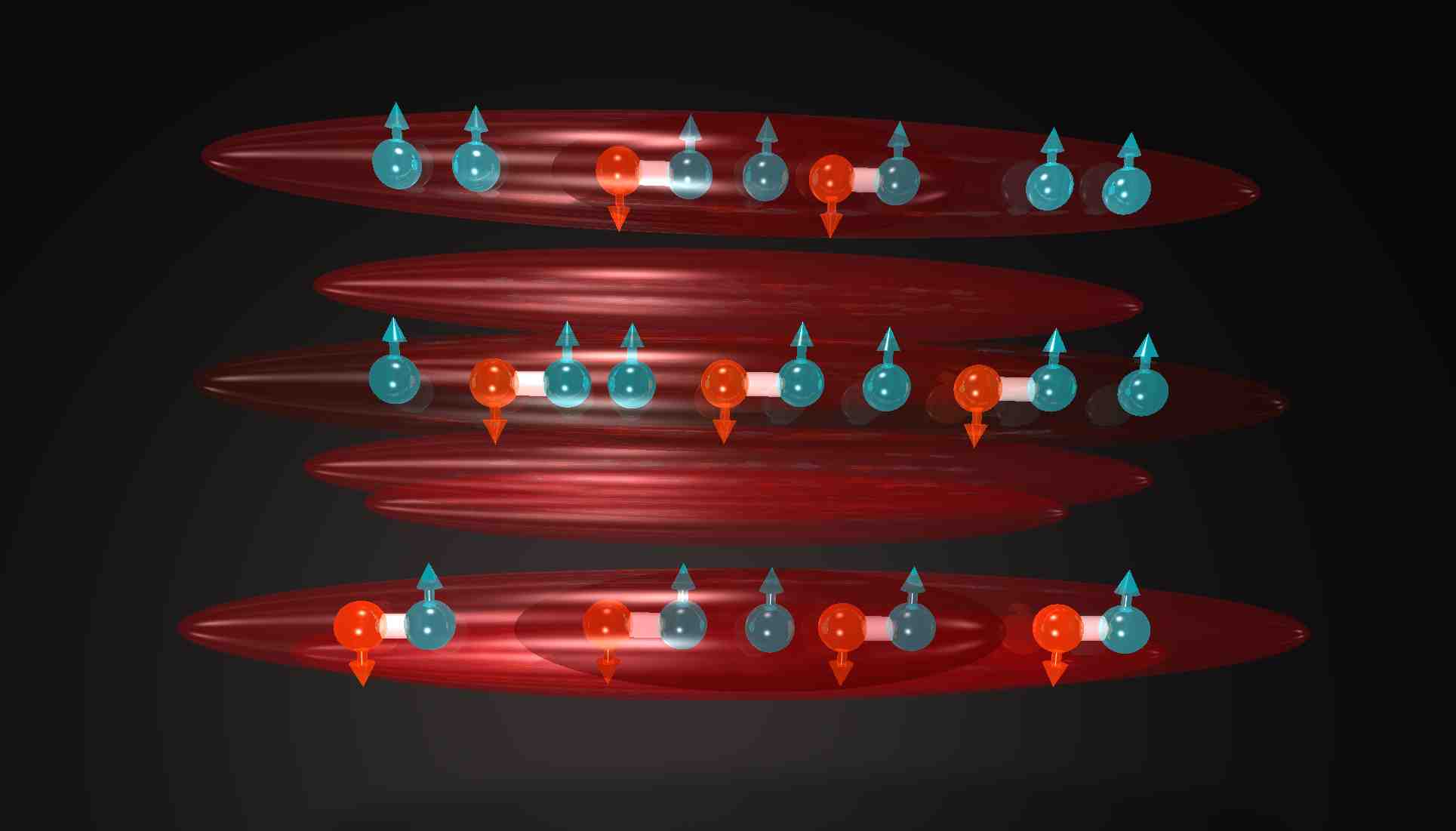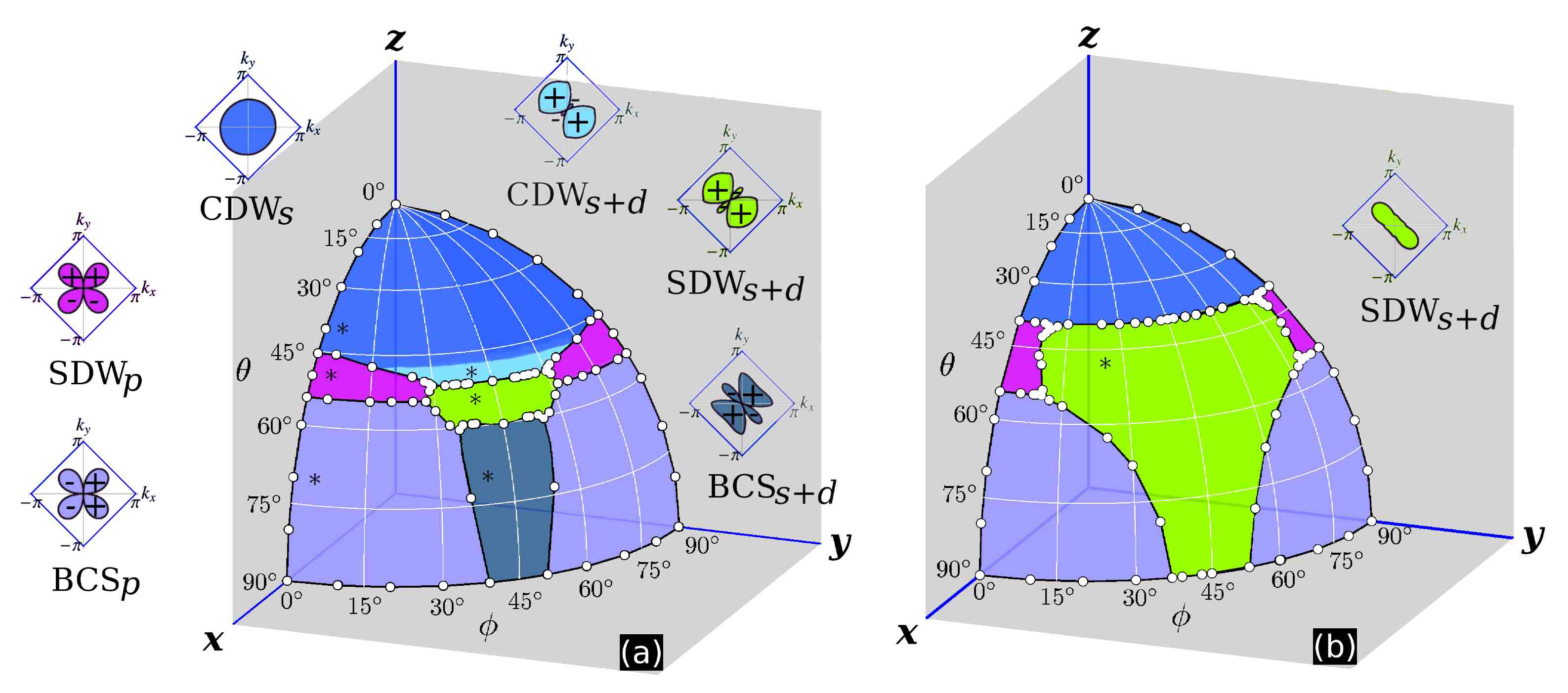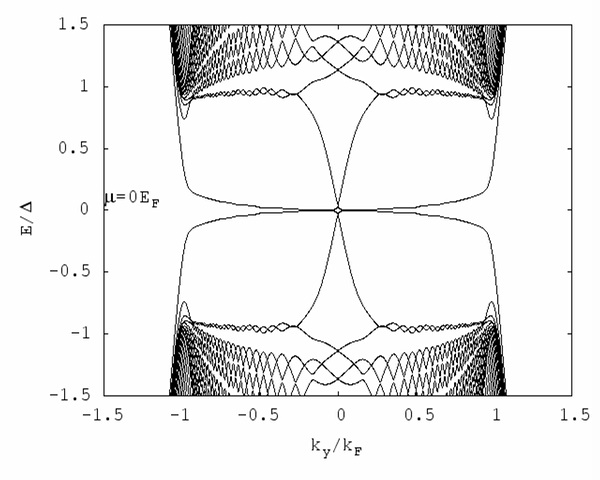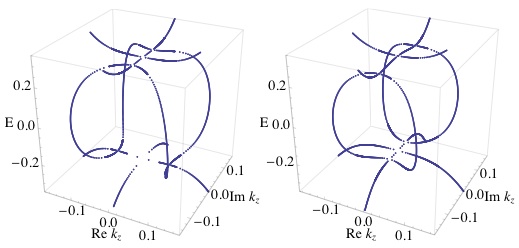Erhai Zhao
Assistant Professor Condensed Matter TheoryGeorge Mason University
Introduction. Two research themes of our group are explained below for non-experts.
Both themes are driven by the desire to understand quantum matter,
substances found in nature or synthesized in laboratories with
spectacular, counterintuitive, but immensely useful
macroscopic properties. Comprehending the collective behaviors of a large number of
quantum particles interacting strongly with each other is
a notoriously hard, fundamental science challenge. Many believe
that the ability to coherently control quantum matter will lead to
a paradigm shift in e.g. designing functional materials, computing and communication,
and metrology.
A. Many body physics of ultracold quantum gases
Ultracold atoms refer to quantum degenerate gases of alkali atoms
(such as Rubidium, Potassium or Lithium) confined in vacuum by laser beams
and chilled to nano-Kelvin temperatures. They are the latest breeds of quantum matter, and
literally the coolest stuff ever created by mankind.
These systems provide well-controlled settings to advance our fundamental understanding on
the collective behaviors of strongly interacting quantum particles.
Pioneering works leading to these achievements were awarded Nobel Prize in 1997
(for "development of methods to cool and trap atoms with laser light") and 2001
(for "achievement of Bose-Einstein condensation in dilute gases of alkali atoms").
We are particularly interested in the quantum phases of Fermi gases in new parameter
regimes brought by ongoing cold atoms experiments. Examples include an "exotic" form of
superfluidity know as modulated superfluid, the orbital ordering pattern of atoms on higher bands,
dipolar Fermi gases, and topological phases of cold atoms.

>> One-dimensional Fermi gas with spin imbalance.
We constructed the effective field theory from the Bethe ansatz
solution (PRA, 2008; JLT 2010), and examined its exact thermodynamics (PRL 2009). [Image courtesy of Prof. R. Hulet, Rice Univ. Liao et al, see Nature 467 (2010)]

>> Phase diagram of two-component dipolar Fermi gases from renormalization group analysis. arXiv:1209.2671. Our earlier work predicted a new phase of matter, bond order solid, in single component dipolar Fermi
gases (PRL, 2012).

>> A topological ladder without artificial gauge fields or spin orbit coupling. Nature Communications 4, 1523 (2013). doi:10.1038/ncomms2523
B. Superconducting heterostructures; Quantum transport
Superconductivity is a hall mark macroscopic quantum mechanical phenomenon.
At low temperatures, many materials become superconductors with vanishing electrical
resistance. Moreover, (weak) magnetic field gets expelled from the bulk. A conventional
superconductors can be thought as a "perfect" quantum fluid of pairs of electrons, loosely
bound together by some attractive interaction between electrons, all sharing the same
quantum state. Superconductor has become a leading competitor in building new
of quantum devices and qubits (the fundamental building block for a quantum
computer).
We are interested in superconductors driven out of equilibrium, especially in
spatially inhomogeneous systems as in devices. The research is motivated
by the recent success in fabricating superconducting nanostructures and circuits
for electronic, spintronic, as well as quantum computing applications.
More broadly, our group investigates the transport properties of mesoscopic to nano-scale
quantum devices.

>> The spectrum of a superconductor-topological insulator heterostructure, movie made by Mahmoud Lababidi. Lababidi and Zhao,
PRB 86, 161108(R) (2012)

>> Complex band structure of Bi2Se3, a topological insulator. Zhao et al, PRB 82, 205331 (2010).